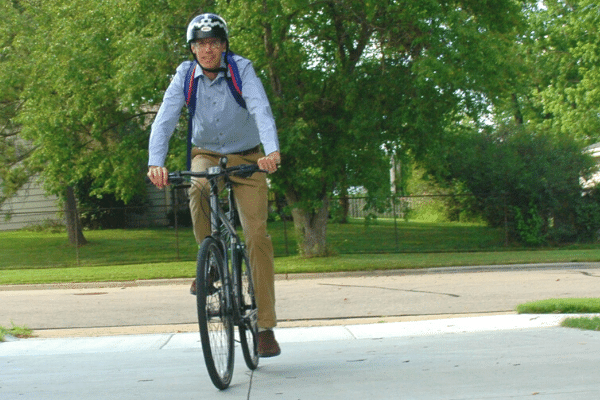This post was last updated on August 11th, 2022 at 11:23 am
A desire to stay safe amid a global pandemic has led to unwanted expanding waistlines for many people. Staying home has translated into inactivity for too many people, but it doesn’t have to be that way for you. There’s nothing inevitable about falling victim to the quarantine 15. You can structure your daily routine to keep in shape.
I’m not talking about getting a gym membership and buying the latest and greatest piece of exercise equipment. This post isn’t about training to run a marathon. Rather, I’m referring to adding more movement to the tasks you already do as part of your daily routine. I’m talking about maximizing your (brace yourself, this is a mouthful) non-exercise activity thermogenesis, or NEAT. NEAT describes all the physical activity you do that’s not sport related. But don’t let the “non-exercise” part of NEAT fool you. NEAT activities can be a strenuous as you want them to be.
NEAT combats sitting. Americans are doing more of it than ever as they embrace a digitalized lifestyle. They don’t even have to go to a grocery store anymore. They can order online and have their groceries delivered, without leaving their beds. With the pandemic, the problem is getting worse as people rely more on the internet to accomplish tasks previously requiring some physical exertion. But pandemic or not, there’s no reason to spend the day sitting. You can get in better shape through your everyday activities.
High NEAT levels can help you keep in shape
Not only that, you may be able to lose weight, or at least not gain it, through NEAT. A 1999 study on overeating found those people who overate but maintained higher levels of physical activity were able to maintain a healthy weight, unlike those who overate but weren’t as physically active. The study examined the effect of NEAT. Those who didn’t gain weight used high levels of NEAT.
Here are four frugalmatic ways to build more NEAT into your day:
01 Biking or walking to work
Or, biking or walking to the store, library, or other places, depending on how the pandemic has changed where you need to travel. Make a list of all the places you go during the week and ask yourself whether you can bike to one of them regularly. Even if you only bike 15 miles a week, that adds up to 780 miles a year. Of course, you can always bike just for fun, but it’s too easy to skip biking when you don’t have to do it. By using a bike to get to where you need to go, you’ll “force” yourself to get regular exercise. You can even bike in the winter by acquiring a few additional accessories, such as metal-studded bike tires.
02 The yard work(out)
If you have a yard, think of it as a cross-training course. Mowing and raking leaves are two great ways to work up a sweat. Look around your yard and home, and there’s unlimited exercise opportunities: washing windows, trimming hedges, spreading mulch, weeding, caulking, and painting. All these tasks can turn yard work into workouts. In the winter, substitute the snow blower for a snow shovel, even if for only part of the job.
03 Cleaning the house
I’m not a big fan of cleaning, and I probably have a lot of company on this one, but cleaning affords a lot of opportunity for exercise. Consumer culture promotes things like robotic vacuum cleaners to reduce your workload. But in trading the classic vacuum for a robot, you’re giving up some physical activity. You can even incorporate lunges and other exercise moves to the vacuuming routine to burn additional calories.
04 Playing with the kids
It doesn’t matter how silly children’s games might seem, if they involve physical activity, it’s good to indulge in them. Parents with little ones scampering around the house don’t need trainers because their kids are the trainers. If you follow their lead, you can end up feeling like you just ran a race. Playing with your kids is frugalmatic: You get exercise, plus a bonding experience. And if you’re frugal (which of course you are), playtime won’t cost a cent.
05 While-you-wait workouts
One of my favorite times to get in some pushups or squats is while waiting for something to happen, whether the toast to pop or the water to boil. I like to crank out pushups and crunches while waiting for my computer to boot up. TV commercials offer a smooth transition into a set of squats. If I’m involved in a long telephone conversation, I like to pace around a room, even sometimes outside. While-you-wait workouts should fit seamlessly into your daily routine. You shouldn’t have to go out of your way to do these exercises.
Being active means breaking up long periods of sitting
It’s not enough to be active for part of the day and then sit for extended periods the rest of the day. It’s a myth that exercise can “cancel out” the negative effects of prolonged sitting. A 2010 study, “Too much sitting: The population-health science of sedentary behavior,” reviewed data from several studies and found people who exercised a lot but were also highly sedentary (known as “active couch potatoes”) experienced adverse health outcomes associated with a sedentary lifestyle. Being active throughout the day is important, though that doesn’t mean you have to be doing aerobics all the time. Studies suggest people benefit from light activities not just intense workouts. The simple act of standing up and walking around to break up those sitting periods can benefit your health.

Just get moving
When it comes to living a healthier lifestyle, my advice is simple: Just get moving. Don’t get caught up in how fast you’re running or what type of exercise equipment you should buy. Focus more on whether you’re sitting or moving.
Finally, don’t be afraid to start small if, for example, biking to work seems overwhelming. Start off biking just once a week. The key is to develop a routine that automatically builds physical activity into your day, so you don’t have to stress about whether you’re being active enough. Feeling inspired? Share this post with others.

